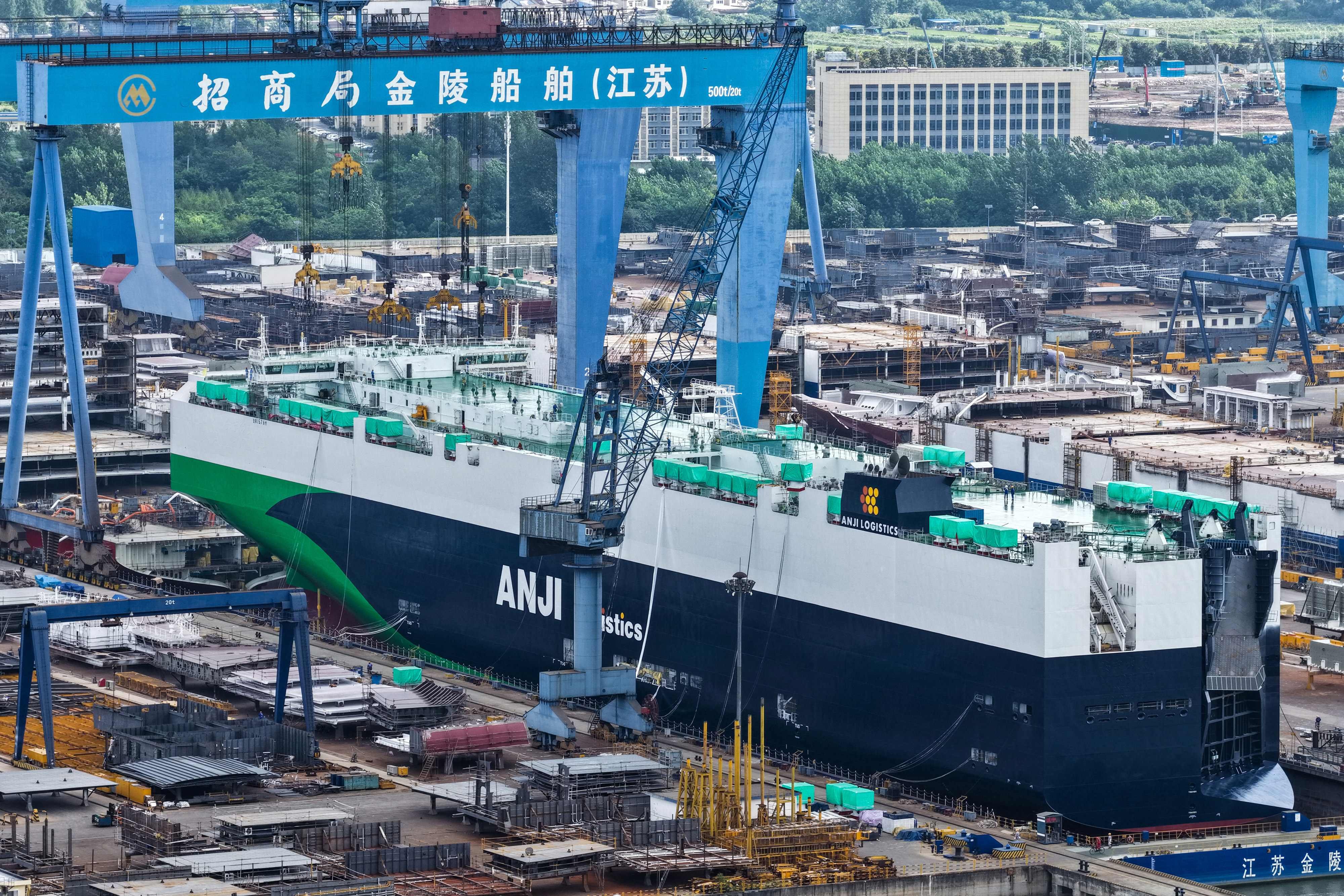Behind Trump’s South Korea deal, a plan to transform global shipbuilding
South Korea has pledged US$150 billion to help the US rebuild its shipbuilding industry – and compete with China

South Korea has pledged US$150 billion to help its shipbuilders enter the US market as part of its new trade deal with Washington, a move that could help America revive its shipbuilding industry and counter China’s dominance in the sector.
US President Donald Trump announced on Wednesday that the United States and South Korea had agreed a “full and complete” trade deal, which would see the US impose a 15 per cent tariff on South Korean goods and receive US$350 billion of investment from its Asian ally.
Shortly after, South Korean President Lee Jae-myung stated that US$150 billion of the promised investment would be dedicated to shipbuilding – an industry where South Korean firms are second only to China in global market share.
The capital would provide “solid support” for South Korean companies entering the US shipbuilding industry, Lee wrote in a Facebook post on Thursday. The wider US$350 billion investment package was intended to solidify bilateral cooperation in strategic industries, including semiconductors, he added.
Seoul clarified in a media briefing on Thursday morning that the promised funds would not come in the form of direct equity investments, but “will primarily consist of loans and guarantees”.
Earlier this week, local media outlets in South Korea reported that Seoul had proposed a multibillion-dollar project to Washington named “Make American Shipbuilding Great Again” during their trade negotiations, which would involve large-scale investments in the US by Korean shipbuilders and government financial support measures.
State-run entities like the Export-Import Bank of Korea and Korea Trade Insurance Corporation were being considered for involvement in the scheme, South Korea’s Yonhap News Agency reported on Monday.
South Korea’s shipbuilding industry is regarded as being uniquely positioned to assist Washington’s ambition of reviving American shipbuilding and restraining China’s dominance in the sector.
Earlier this year, Washington announced plans to begin charging steep port fees targeting China-built or operated vessels from October. The policy appears to already be benefiting South Korea’s shipbuilders as companies become nervous about placing new orders with Chinese shipyards.
In the first half of 2025, South Korea’s share of new vessel orders rose to 25.1 per cent in vessel gross tonnage terms, compared with 15 per cent last year. China’s share, meanwhile, slipped to 51.8 per cent from 70 per cent, according to a report released by the Export-Import Bank of Korea on Monday.
The report said South Korea’s recovery in market share had largely been driven by US-China tensions, but added that the benefits may not last long, as US actions against China were likely to push up freight rates and logistics costs on US routes.
However, analysts expressed scepticism about the feasibility of Seoul’s investment pledge and cautioned that rebuilding America’s shipbuilding capacity would likely be a long and challenging process.
Unhandled type: inline-plus-widget {“type”:”inline-plus-widget”}
“It is not the foreign country investing in the US. It is individual companies doing it, and the government cannot dictate what they will do,” said Lars Jensen, founder of the maritime consultancy Vespucci Maritime.
He added that it was easy to announce a large investment figure over an unspecified time period, but that the actual implementation would be a different matter.
Wu Jialu, a chief analyst of industrial research at Citic Futures, said the US$150 billion investment may prompt South Korean shipbuilders to build or acquire shipyards in the US, providing talent and technological support.
South Korean firms could help improve the competitiveness of the US shipbuilding industry, particularly in the construction of high-value-added vessels, but reviving the whole industry would still be a protracted process due to supply chain and capacity limitations, she said.
The full impact of the US port fees has yet to become clear, and future market trends would also depend on fleet renewal and upgrading demand, Wu added.
Hanwha Ocean, one of South Korea’s top shipbuilders, made a major investment in December to acquire Philly Shipyard in Philadelphia, which is currently the only US shipyard that is operated by a South Korean company.
In late July, Hanwha Ocean’s US subsidiary placed an order for a liquefied natural gas carrier at the Philly Shipyard, the first LNG carrier for export to be built in the US in nearly five decades.
However, a significant portion of the construction will be carried out at Hanwha Ocean’s Geoje shipyard in South Korea, while the Philly Shipyard will be responsible for US regulatory compliance and safety certifications, Hanwha said, noting it was “laying the foundation for a collaborative production framework”.
Japan also finalised a deal with the US in July that will see the creation of a US$550 billion fund to invest in a range of projects, including the construction and modernisation of US-based shipyards.